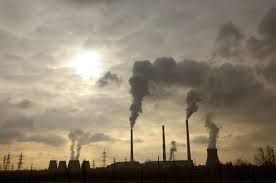There are several reasons for this, but one stands out: government support. In India state-owned companies invest more than $6bn in coal mining and coal-fired power each year; statebacked banks provide some $10.6bn in financing. Indonesia doles out more than $2bn annually for consumption of coalfired power. Japan and South Korea finance coal projects outside their borders, too.
原因有很多,但最突出的一個是:政府的支持。在印度,國有企業每年在煤炭開采和燃煤發電方面的投資超過60億美元;國有銀行提供了約106億美元的融資;印尼每年為燃煤發電支出逾20億美元。日本和韓國也為境外煤炭項目提供資金。
Government support is hardly surprising. State-backed coal firms make money and create jobs. Wind turbines and solar panels provide power only intermittently; for now, dirtier power plants are needed as back up. Gas is pummelling coal in America, but remains a bit-player in India and much of South-East Asia, since it has to be imported and is relatively expensive.
政府的支持不足為奇。國有煤炭企業賺錢并創造就業機會。風力渦輪機和太陽能電池板只能間歇性地提供電力;目前,需要更臟的發電廠作為后備。在美國,天然氣正在代替煤炭,但在印度和東南亞大部分地區,天然氣使用比例仍然不高,因為天然氣必須進口,而且相對昂貴。

Disentangling coal from the region’s economies is difficult. Indonesian coal companies are a powerful lobby; not coincidentally, power tariffs favour coal over wind and solar projects. In India coal subsidises passenger fees on railways. And heavy lending by state-owned banks has tied the health of the financial system to that of the coal industry.
將煤炭從這些地區的經濟中分離出來是困難的。印尼煤炭公司是一個強大的游說團體;與風能和太陽能項目相比,電力關稅更有利于煤炭項目,這并非巧合。在印度,煤炭收入能補貼鐵路客運費用。國有銀行的大量放貸將金融體系的健康狀況與煤炭行業的健康狀況聯系在一起。
Nevertheless, governments betting on coal face three big risks. One is environmental. Emissions from coal plants that are already built—let alone new ones—will ensure that the world exceeds the level of carbon-dioxide emissions likely to push global temperatures up by more than 1.5°C.
然而,押注煤炭的政府面臨三大風險。一個是環境。已建成的燃煤電廠的排放——更不用說新建電廠了——將導致全球二氧化碳排放量超過可能將全球氣溫推高1.5攝氏度以上的水平。
譯文由可可原創,僅供學習交流使用,未經許可請勿轉載。












